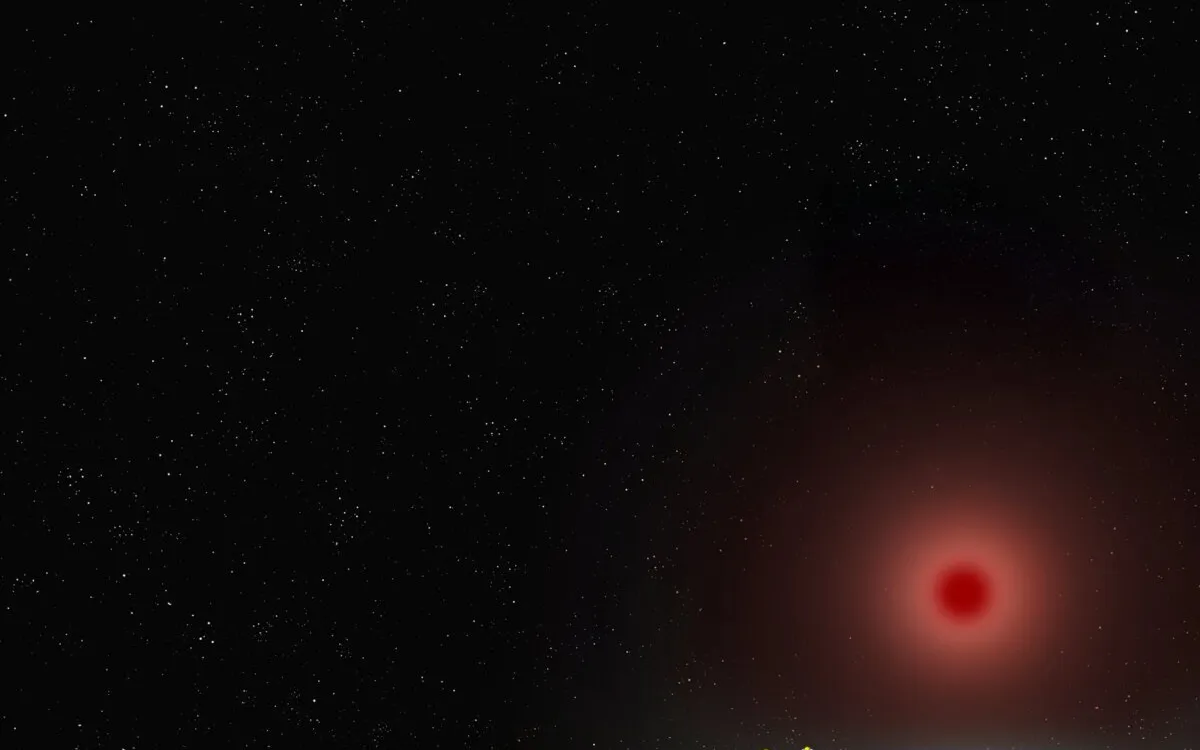
Last week, researchers utilizing the James Webb Space Telescope (JWST) announced an exciting finding regarding the distant exoplanet K2-18 b. This intriguing world may harbor a potential trace of dimethyl sulfide (DMS), a molecule primarily produced by microscopic marine life on Earth. K2-18 b is located approximately 120 light-years away and orbits within the habitable zone of a red dwarf star. It has been classified as a possible Hycean world, characterized by its steamy, ocean-covered surface and a hydrogen-rich atmosphere.
Despite the promising detection of DMS, which came with a statistical confidence level of 3-sigma (indicating potential significance but not definitive proof), the news sparked a wave of speculation regarding the possibility of extraterrestrial life. Reactions from scientists have been mixed; while some express cautious optimism about these findings, others remain skeptical. The core question remains: could DMS signify life, or is it merely the result of unusual abiotic chemical reactions occurring under extreme conditions?
In our latest Giz Asks segment, we compiled insights from various experts to delve into the nuances of this discovery, examining the chemistry involved, the limitations of the data, and what is required to shift from “maybe” to a more definitive conclusion. In the realm of astrobiology, the distinction between intriguing and extraordinary findings is remarkably subtle.
Oliver Shorttle, a planetary chemist from the University of Cambridge, has focused on understanding the climate and structure of K2-18 b. He expresses doubt regarding the implications of the DMS detection, suggesting that several critical steps must be validated before claiming signs of life beyond Earth. These steps include:
Confirming the signal originates from the planet in question.Attributing the signal to the specific biosignature of interest (DMS).Ruling out non-biological processes that could produce the same signal.Establishing the existence of hypothetical biological processes that could account for the biosignature.Shorttle notes that the detection has not yet passed the first two steps, emphasizing that the current data does not necessitate the assumption of liquid water oceans or a climate suitable for life. He cautions that the atmosphere of K2-18 b may be too hot for liquid water and suggests that any detected DMS could arise from a lifeless atmosphere rich in sulfur and hydrogen.
Christopher Glein from the Southwest Research Institute regards the new dataset as interesting but urges caution. He points out that the spectrum of K2-18 b shows unexplained features that could potentially be linked to DMS or dimethyl disulfide (DMDS). Glein stresses that this data is pushing the limits of JWST’s capabilities and that further scrutiny may reveal a lack of statistically significant evidence for these features. He urges the scientific community to approach the idea of DMS as a biosignature with caution, as understanding the abiotic chemistry of such planets is still in its infancy.
Lead author of the study, Nikku Madhusudhan, an astrophysicist at the University of Cambridge, acknowledges that the needle has shifted slightly towards the potential existence of life. However, he emphasizes the importance of remaining cautious and open to alternative explanations. Madhusudhan believes that additional data collected in the next one to two years will provide better insights into the situation.
Ignas Snellen from Leiden University expresses frustration over the media portrayal of the findings, stating that the research team has found bumps in the spectrum that lack clarity regarding their authenticity and causes. Snellen criticizes the focus on DMS without considering other possible non-biological sources, urging that the excitement surrounding this discovery may be premature and could harm the credibility of the field of astronomy in the long run.
Sara Seager, a planetary scientist at MIT, shares concerns about the potential for K2-18 b to be classified as a "biosignature planet candidate." She argues that definitive confirmation may never be achievable, highlighting the need for further investigation into alternative production pathways for DMS. Seager appreciates the enthusiasm around the findings but insists that more evidence is crucial for categorizing this and other planets as biosignature candidates.
The detection of dimethyl sulfide on K2-18 b represents a significant moment in the search for extraterrestrial life, yet it also highlights the complexities and challenges inherent in astrobiological research. As scientists continue to analyze this data and explore the potential for life beyond Earth, a cautious and methodical approach will be essential to navigate the thin line between compelling and conclusive evidence.